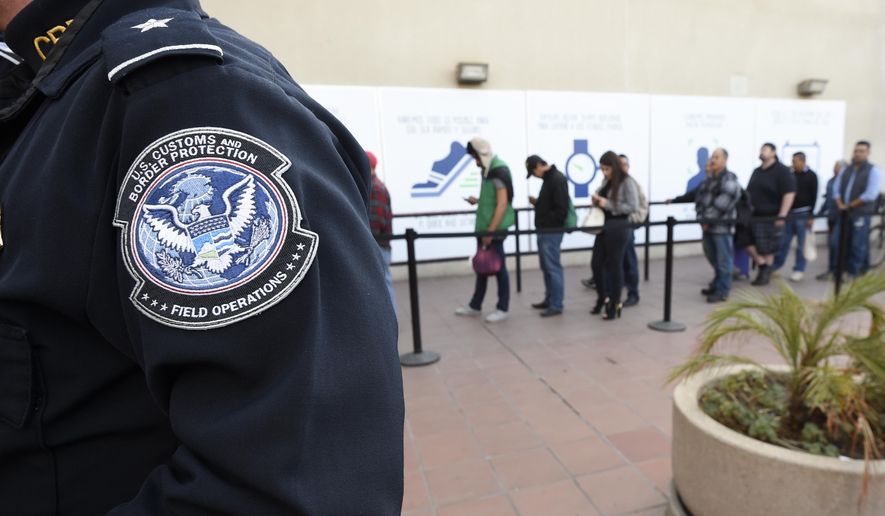The heads of two federal immigration law enforcement divisions assigned themselves security details and are using “a fleet” of government vehicles to get to and from work despite in violation of the law, an inspector general said in a report released Thursday.
John Roth, the inspector general for Homeland Security, which oversees both Customs and Border Protection (CBP) and Immigration and Customs Enforcement (ICE), said neither agency has ever shown a credible threat to their chiefs. Yet both of them have created armed security details that shadow them.
“There is no statutory authority for the use of protection details,” Mr. Roth said of the practice, which appears to date back to at least the Obama administration, though it’s continued under the Trump administration.
Mr. Roth said it would be different if there were specific threats against either the CBP commissioner or the ICE director, but those have never been shown. Instead ICE says its director deserves protection because he deals with “hot button” issues, and CBP says its commissioner needs a detail because he is involved in counter-terrorism enforcement and combatting international criminal gangs.
Mr. Roth, though, said far from being more safe, the security details may actually be making targets out of the agency leaders.
He recounted one agent who had protected former ICE Director Sarah Saldana while she was at her home in Texas. That agent said almost nobody in Dallas, where Ms. Saldana had been a prosecutor before becoming ICE chief, recognized her — but having a security detail “attracted attention.”
CBP said it spends $700,000 a year on the payroll costs for the detail protecting its commissioner. That doesn’t include travel and operational expenses, or the SUVs both agencies said they’ve bought to chauffeur the leaders.
Homeland Security rejected the report.
“It is vital that DHS protects its senior leadership from acts which may jeopardize their safety and security and thus impede their ability to safeguard the American people,” said Jim H. Crumpacker, Homeland Security’s liaison to the inspector general.
He said CBP has received communications urging the commissioner to “resign or please die soon,” and suggesting his wife would be raped and his grandchildren sexually molested.
He said ICE’s director has had home address and telephone information published as part of a campaign of harassment, and said there are “numerous social media postings inciting potential acts of violence against ICE officers, generally.”
Mr. Crumpacker also said CBP and ICE face regular protests outside their headquarters.
Mr. Roth, though, said none of the instances amount to a “documented threat assessment” that would be needed to justify the cost. Or, he said, Congress could act to specifically grant the authority to both CBP and ICE chiefs, as it already does for the commandant of the Coast Guard, which is another Homeland Security branch.
Mr. Crumpacker said that they’re still studying the legal situation, but for now they believe there’s an “arguable” legal justification under the law for the expense. He promised an updated policy next year.
Mr. Roth said that wasn’t good enough.
“DHS has not articulated the reasons a fairly simple policy should take a year to issue, particularly given the fact that the Department has been aware of the issue since at least November of 2016,” he said.
• Stephen Dinan can be reached at sdinan@washingtontimes.com.




Please read our comment policy before commenting.